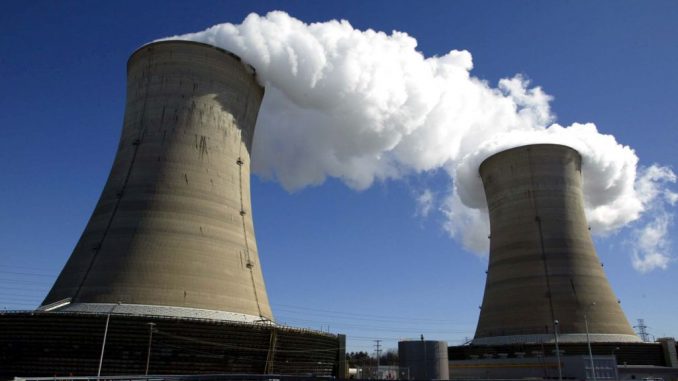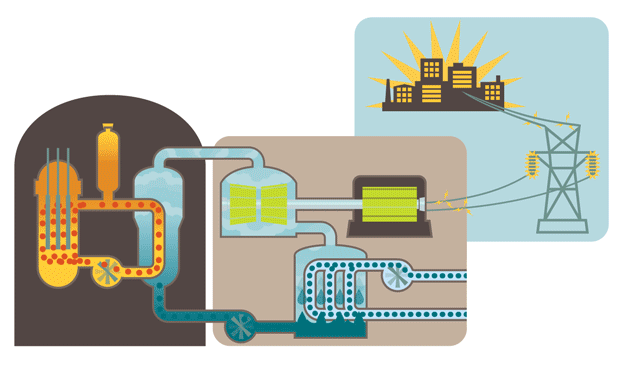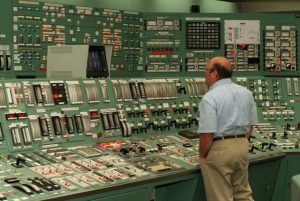
Monday marked the 37th anniversary of the Three Mile Island nuclear accident, the first major nuclear power plant emergency to rattle the U.S. and the world.
On March 28, 1979, a minor incident at a nuclear power plant in Harrisburg, Pennsylvania quickly turned into a major nuclear accident with the world holding its breath as the reactor core went into meltdown.
Incredibly the fictional film “The China Syndrome” starring Jane Fonda, Michael Douglas and Jack Lemmon was released depicting the exact scenario just days before the accident, which added more fuel to the nuclear meltdown fears.

BYPASS THE CENSORS
Sign up to get unfiltered news delivered straight to your inbox.
You can unsubscribe any time. By subscribing you agree to our Terms of Use
Latest Video
Thirty seven years ago a potentially major nuclear disaster was narrowly avoided along the Susquehanna River.
Laboratory Equipment reports:
Three Mile Island has since become just a footnote in the annals of disastrous mishaps like Chernobyl and Fukushima. No one died, according to regulatory agencies, and almost all the contamination was bottled up within the melted-down core of the Pennsylvania plant. But the incident still resonates in the U.S., where the disaster resulted in enhanced reactor safety – and a still-strong cynicism about the energy source’s American future.
The morning of March 28, 1979, was a study in the domino-effect of technological disasters.
A failure in a non-nuclear section of the plant around 4 a.m. stopped the flow of water to the steam generators that needed to remove heat from the nuclear reactor’s core.
As a result, the reactor and the turbine-generator of the TMI-2 facility automatically shut down – and pressure began to build up.
A manual relief valve was opened by operators to relieve that pressure. But instead of automatically closing once normal pressure levels were reached, it was stuck open. The staff at the plant monitored the controls – all of which falsely indicated the valve had closed.
The coolant for the core continued to escape through the valve – and water levels dropped around the core. The workers assumed that as long as the pressurized water levels were high, the core was properly covered with the cooling water. But as alarms and warnings rang out, they took actions they believed would help the problem: further reducing the level of emergency cooling water pumped into the core.
The core overheated. The long metal tubes holding the fuel ruptured, and the fuel pellets melted.

Half of the core melted down in the early stages of the accident. With an hour to go until a complete meltdown, however, the engineers started the water flow again – cooling down the uranium enough to avert total disaster.
Luckily, other parts of the Three Mile Island infrastructure prevented the disastrous chain of events from extending further, like it did in the Ukraine in 1986 and in Japan in 2011.
“Unlike the Chernobyl and Fukushima accidents, TMI-2’s containment building remained intact and held almost all of the accident’s radioactive material,” according to the United States Nuclear Regulatory Commission.
But the panic over the potential continued up the chain of command. The White House was notified at 9:15 a.m., and all non-essential personnel were evacuated from Three Mile Island by 11 a.m. The U.S. Department of Energy monitored radioactivity above the plant by air by midday.
Pennsylvania Gov. Richard L. Thornburgh and federal authorities decided it would be best to evacuate the most-vulnerable people: pregnant women and preschool-age children were advised to get more than five miles away from the plant.
Public panic prompted more than 100,000 people to flee the towns surrounding the plant.
A hydrogen bubble in the dome of the pressure vessel holding the reactor core caused anxiety for the next two days, as experts considered it a potential explosive. By April 1, however, the nuclear experts determined it would simply shrink without exploding, because of the absence of oxygen.
The radiation was almost all contained, the feds said. The 2 million people around TMI-2 during the meltdown received only 1 millirem above the usual dose of radioactivity. For comparison’s sake, the normal radioactive background dose is 100 millirems per year, the federal authorities claimed.
The NRC concedes that the panic and anxiety of Three Mile Island “permanently changed both the nuclear industry and the NRC.”
“Public fear and distrust increased, NRC’s regulations and oversight became broader and more robust, and management of the plants was scrutinized more carefully,” the agency says.
Nuclear’s growth tailed off considerably in the U.S. after 1979. It did reach a peak generation of 23 percent of all U.S. electricity in December 1999 – but that total fell to 18 percent in July 2015. In the same 16-year time frame, natural gas rose from 11 percent to 35 percent of the share of the county’s generating power.
Some experts hold that economics, and not disasters, are what have curtailed the use of nuclear in the United States.
Ninety-nine nuclear plants are currently in use in the U.S. today, the NRC says. The most recent performance analysis of the plants put all but three in the highest-performance category – but only 85 met all safety and security objectives, the NRC found.
Three Mile Island’s Unit 1 reactor, which was shut down in case of disaster, resumed operation in 1985. Cleanup on Unit-2 continued until 1993.
——
The China Syndrome (1979) Trailer
Desmond Ngai YouTube video


